Humbug Tales
Project Breakdown

Project Goals
Creating a publisher-facing demo of our game was our team’s primary goal during the period I worked on Humbug Tales.
The demo needed to establish our core mechanics and convince a publisher of our game’s future potential in 45 minutes or less.
Primary Responsibilities
Design
-
Gameplay Mechanics and Prototyping
-
Economy Balancing and Resource Management
-
Environmental Puzzles
-
Level Layouts
Other Hats
-
Level Art Pipeline
-
Technical Writing / Documentation
-
Level Scripting in C#
-
UI / UX
-
Steam Trailer Material
Design
Trail System
A unique aspect of Humbug Tales’ gameplay is the pheromone trails that the player can draw across the map for their ants to follow.
Our goal was to create an accessible, yet extensible resource-transport system that would appeal to casual players.
At the heart of the intended player experience was the concept of ‘Wuselfaktor’ - the satisfaction of watching a chaotic, yet orderly system at work. This led me to research logistics genre staples like Mini Metro for inspiration.
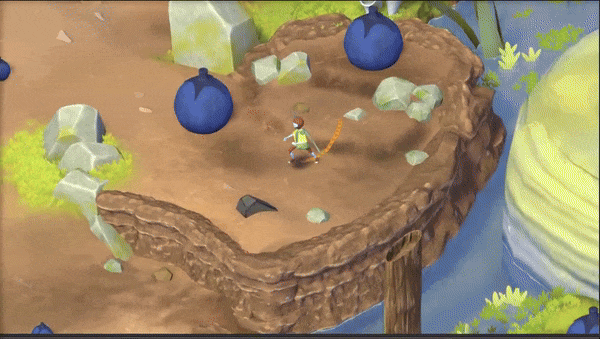
Resource collection with a single pheromone trail
A single trail allows ants to transport resources from A to B - but to bring out the Wuselfaktor, players needed to be able to build up a more complex system out of these.
I designed rules that enabled players to connect multiple trails into a network - one that would allow them efficiently collect scattered resources spread out over a large area.
Ants would patrol their respective routes, but could also pass food chunks to ants on nearby trail segments. This ‘pass-the-parcel’ style of transporting resources had a lot of Wuselfaktor, and strongly motivated playtesters to make more use of the trail system.
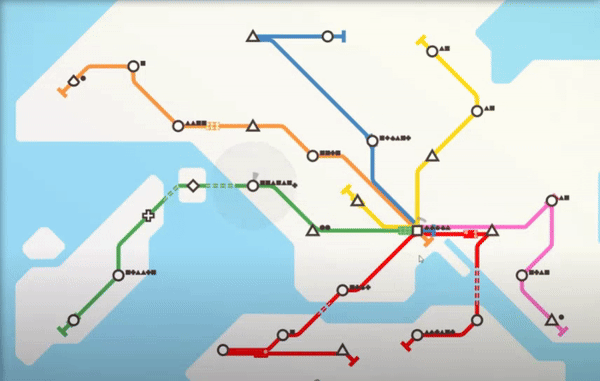
Design inspiration from Mini Metro
(All credit to Dinosaur Polo Club)
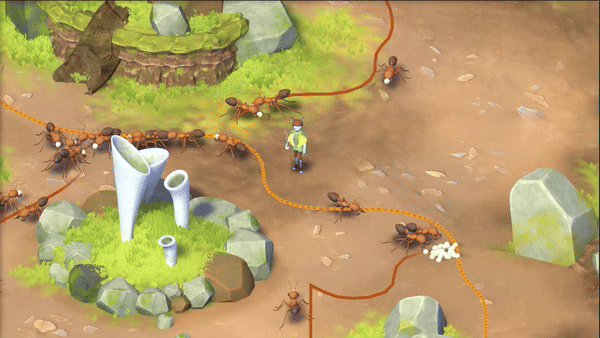
Branching trail systems in Humbug Tales

Design schematic for the mechanic
The trail system went through several iterations with subsequent playtesting:
-
Ants were given the ability to leave food chunks on the ground if they could not immediately pass them on to another ant, which improved efficiency.
-
'Honeypot' ants were added to act as caravans, able to transport a large quantity of resources in a single trip.
-
The player was given a ‘pheromone meter’ which limited the maximum length of a single trail - this encouraged players to make networks of multiple linked trails to accomplish their goals, and made the system more strategic and aesthetically rewarding.
Level Design
The demo of Humbug Tales takes place on the miniature shores of a lush swamp biome, intended to have a vibrant and inviting feel.
Using concept art and visual descriptions from the team, I started to build the world of Humbug Tales:
-
Collected environment references and created a mood board.
-
Wrote specifications for foliage and props I'd need.
-
Sketched and prototyped environmental puzzles

Early concept art for the world (not my work)
Landmarks
A big part of the appeal of Humbug Tales’ world is the tiny size of the player in relation to their surroundings.
When designing the level, I made sure to include prominent landmarks such as huge mushrooms, tree roots, and reeds, which served two purposes:
-
Orient the player and make it easier to understand the space
-
Emphasize the miniature scale of the level, which vastly increased player immersion.
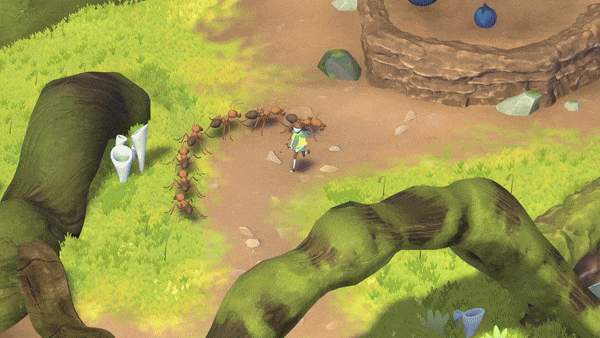
Landmarks like arches and rock islands
Environmental Puzzles
The design pillars of Humbug Tales prioritized 'Immersion in the world of bugs' above all else - and so it was important that our puzzles reflected this by feeling like an organic part of the miniature world.
My approach to puzzles was to first design modular 'building blocks' - environmental features that had potentially interesting player interactions. E.g:
-
Twigs and stones that could be dragged
-
Rotten barriers that could be attacked
-
Reeds that could be felled to form bridges across gaps
To form more complex puzzles , I could then simply combine these in different configurations. I also found that visually camouflaging a familiar element tested players' observation skills and made them perceive it as a fresh and more challenging puzzle.
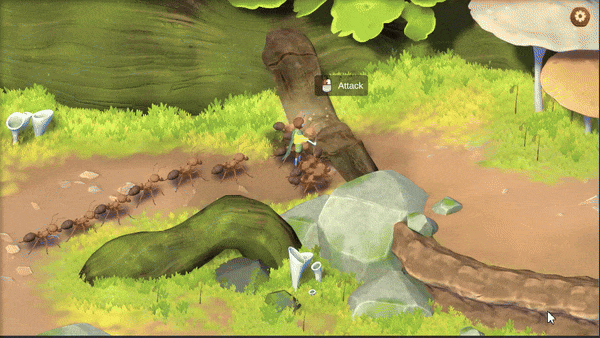
Puzzle mechanics: ants can pull obstacles, break barriers, and bridge chasms
An example of a landmark and an interactive puzzle wrapped in one - the Tree Stump Castle that forms the centrepiece of the demo level.
Playtester Archetypes
Playtesting is always an integral part of my iterative design process. For Humbug Tales, I designed and tested five unique levels for the demo, each made from scratch, before we shipped the final version to potential publishers.
As I organized playtests at different stages of the prototype, I noticed that most of our players fell into distinct behavioural categories (see diagram)
Designing levels that could satisfy multiple playstyles proved to be a challenge - E.g while Explorers preferred an abundance of available food so that they could roam free without the risk of colony starvation, Logisticians would often feel the compulsion to collect every bit of food before progressing, turning a 30 minute level into a 2 hour marathon.
Player Personality primarily influenced the type of feedback we received - E.g Commanders usually wanted shortcuts and ways to give more precise instructions to their ants, while Shepherds expressed more interest in cosy ways to tend to their colony.

Tree stump and puzzle walkthrough

Player Archetypes during Humbug Tales playtests




